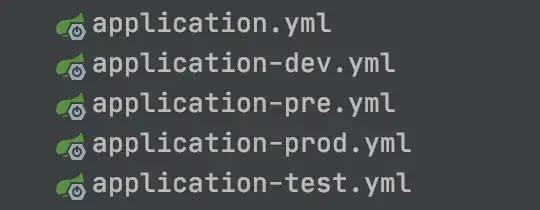异常处理
异常处理的大致流程主要如下。
-
异常信息抛出 ->
ControllerAdvice进行捕获格式化输出内容 -
手动抛出
CustomException并传入ReulstEnum——> 进行捕获错误信息输出错误信息。
自定义异常
@Data @EqualsAndHashCode(callSuper = false) public class CustomException extends RuntimeException { /** * 状态码 */ private final Integer code; /** * 方法名称 */ private final String method; /** * 自定义异常 * * @param resultEnum 返回枚举对象 * @param method 方法 */ public CustomException(ResultEnum resultEnum, String method) { super(resultEnum.getMsg()); this.code = resultEnum.getCode(); this.method = method; } /** * @param code 状态码 * @param message 错误信息 * @param method 方法 */ public CustomException(Integer code, String message, String method) { super(message); this.code = code; this.method = method; } }
错误信息枚举
根据业务进行添加。
@Getter public enum ResultEnum { /** * 未知异常 */ UNKNOWN_EXCEPTION(100, "未知异常"), /** * 添加失败 */ ADD_ERROR(103, "添加失败"), /** * 更新失败 */ UPDATE_ERROR(104, "更新失败"), /** * 删除失败 */ DELETE_ERROR(105, "删除失败"), /** * 查找失败 */ GET_ERROR(106, "查找失败"), ; private Integer code; private String msg; ResultEnum(Integer code, String msg) { this.code = code; this.msg = msg; } /** * 通过状态码获取枚举对象 * @param code 状态码 * @return 枚举对象 */ public static ResultEnum getByCode(int code){ for (ResultEnum resultEnum : ResultEnum.values()) { if(code == resultEnum.getCode()){ return resultEnum; } } return null; } }
常用的封装
统一返回 ResultVo
将所有的接口的响应数据的格式进行统一。
@Data @ApiModel("固定返回格式") public class ResultVo { /** * 错误码 */ @ApiModelProperty("错误码") private Integer code; /** * 提示信息 */ @ApiModelProperty("提示信息") private String message; /** * 具体的内容 */ @ApiModelProperty("响应数据") private Object data; }
ResultVOUtil
public class ResultVOUtil { //成功,有返回值 public static ResultVO success(Object object){ ResultVO resultVO = new ResultVO(); resultVO.setCode(0); resultVO.setMsg("成功"); resultVO.setData(object); return resultVO; } //成功 没有返回值 public static ResultVO success(){ return success(null); } //错误 public static ResultVO error(Integer code,String msg){ ResultVO resultVO = new ResultVO(); resultVO.setCode(code); resultVO.setMsg(msg); return resultVO; } //错误 public static ResultVO error(ResultEnum resultEnum){ ResultVO resultVO = new ResultVO(); resultVO.setCode(resultEnum.getCode()); resultVO.setMsg(resultEnum.getMsg()); return resultVO; } }
全局异常拦截
@Slf4j @RestControllerAdvice public class GlobalExceptionHandling { /** * 自定义异常 */ @ExceptionHandler(value = CustomException.class) public ResultVo processException(CustomException e) { log.error("位置:{} -> 错误信息:{}", e.getMethod() ,e.getLocalizedMessage()); return ResultVoUtil.error(Objects.requireNonNull(ResultEnum.getByCode(e.getCode()))); } /** * 通用异常 */ @ResponseStatus(HttpStatus.OK) @ExceptionHandler(Exception.class) public ResultVo exception(Exception e) { e.printStackTrace(); return ResultVoUtil.error(ResultEnum.UNKNOWN_EXCEPTION); } }
多环境配置
SpringBoot多环境配置
对于一个项目来讲基本都4有个环境dev,test,pre,prod,对于SpringBoot项目多建立几个配置文件就可以了。然后启动的时候可以通过配置spring.profiles.active 来选择启动的环境。

java -jar BasicProject.jar --spring.profiles.active=prod
Maven多环境配置
假如想在打包的时候动态指定环境,这个时候就需要借助Maven的xml来实现。
配置XML
<!-- 配置环境 -->
<profiles>
<profile>
<!-- 开发 -->
<id>dev</id>
<activation>
<activeByDefault>true</activeByDefault>
</activation>
<properties>
<activatedProperties>dev</activatedProperties>
</properties>
</profile>
<profile>
<!-- 测试 -->
<id>test</id>
<properties>
<activatedProperties>test</activatedProperties>
</properties>
</profile>
<profile>
<!-- 准生产 -->
<id>pre</id>
<properties>
<activatedProperties>pre</activatedProperties>
</properties>
</profile>
<profile>
<!-- 生产 -->
<id>prod</id>
<properties>
<activatedProperties>prod</activatedProperties>
</properties>
</profile>
</profiles>
更改application.yml
spring:
profiles:
# 选择环境
active: @activatedProperties@
使用案例
mvn clean package -P prod mvn clean package -P pre mvn clean package -P test
打包完可以解压开查看application.yml 会发现 spring.profiles.active=@activatedProperties@ 发生了改变。